Silap Inua (Sila): Universal Deity That Controls Life Force Of All Living Things In Inuit Beliefs
A. Sutherland - AncientPages.com - The Inuit concept 'Sila', a multifaceted term encompassing 'the world, the universe; nature, the air, the wind(s), the weather; the place or space outside, the open sky', holds profound significance in Inuit culture and mythology.
However, the one powerful word, Sila or Silap inua ("the owner of sila"), covers them all.
Scholars' attempts to understand the Inuit Sila concept have varied, and they have different theories. Some agree that Sila means a mystic, supernatural power associated with all existence, while others argue that the spirit is not an essence or an abstract power; instead, it personifies these characters.
In Inuit beliefs, Sila is not just a masculine deity or a master of the weather. He is the 'Master of Breath' or the 'Owner of Souls', a universal deity believed to control the life force of all living things. His role is crucial in maintaining the delicate balance between the physical and spiritual realms.
Silap Inua is not merely the vital force that sustains life but also the driving force behind any motion or transformation. This unlimited power governs all events within the realm of existence.
Generally, Silap Inua governs the sky, wind, and weather. As he has no form and individual characteristics, he has never been depicted, and not many myths and legends relate to him. Christian missionaries identified Nanuk, the spirit of polar bears, as the main deity of the Inuit people.
However, this is not entirely accurate. Sila, the air and weather personification, holds a more prominent role in Inuit spiritual traditions. He is believed to control the elements and is revered for providing food through hunting and fishing. While Nanuk is respected, Sila's influence over the natural world makes him a more central figure in Inuit beliefs and practices.
According to the interpretation of anthropologists, Sila is considered one of the oldest Inuit deities. However, in the last 1000 years, his great name is somewhat obsolete as he lost a little on its popularity because of the goddess Sedna and the Mother of Caribou. Sedna, the revered deity Sedna still holds a significant role in Inuit communities across Canada and Greenland, regardless of the versions of her story and her various names.
On the other hand, the Mother of the Caribou (an animal owner) represents the source of caribou, a primary food source for the Inuit.
The complex Inuit belief system is characterized by the principle of animism, the belief that all living and non-living entities possess a spiritual essence or soul.
For example, Igloolik people in Nunavut, northern Canada, relate Silap Inua (Sila) to the breath-soul.
“Every individual is said to have as part of his soul the life force, the life-giving spirit, which is part of the whole animating force Silap Inua. This is, of course, something that never dies; air and the life-giving force go on indefinitely, and so then does the soul of men. When the air passes out of the body at the moment of physical death, it is simply the passing of the soul back into its original matrix (Williamson, 1974: 23).
For the Polar Inuit in northern Greenland, "Sila is the vital force permeating all nature in all its many aspects. Sila means both "the whole, the universe" and "the individual powers or forces of Nature." Sila includes the weather. The Polar Inuit attribute the traditional observances [rituals and customs] to Sila. The individual human vital force, i.e., the breath-soul, is a portion of Sila..."
The West Greenlanders similarly attribute many different meanings to the term 'Sila'. "Sila, as we call it ... nature, the world, the universe, all that is Sila."
Sila also means the air and a mysterious power responsible for the wind.
The Inuit pantheon is remarkably diverse, encompassing a vast array of deities, spirits, and supernatural beings. This animistic worldview permeates the Inuit cosmology, shaping their understanding of the natural world and their relationship with its various entities.
Written by – A. Sutherland - AncientPages.com Senior Staff Writer
Copyright © AncientPages.com All rights reserved. This material may not be published, broadcast, rewritten or redistributed in whole or part without thexpress written permission of AncientPages.com
Expand for referencesReferences:
Merkur, Daniel. “Breath-Soul and Wind Owner: The Many and the One in Inuit Religion.” American Indian Quarterly 7, no. 3 (1983): 23–39.
Mass, K. Mythology: Aztec, Inca, Inuit, and Polynesian Myths
Williamson, Robert G. Eskimo Underground: Socio-Cultural Change in the Central Canadian Arctic
More From Ancient Pages
-
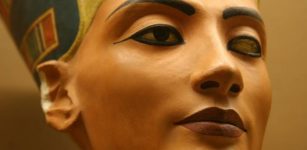 Nefertiti Was A Powerful Queen But Never A Pharaoh – Researcher Says
Archaeology | Jan 23, 2018
Nefertiti Was A Powerful Queen But Never A Pharaoh – Researcher Says
Archaeology | Jan 23, 2018 -
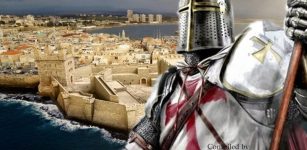 Secret Tunnels Used By Knights Templar Leading To The Treasure Tower – Discovered
Archaeology | Oct 29, 2019
Secret Tunnels Used By Knights Templar Leading To The Treasure Tower – Discovered
Archaeology | Oct 29, 2019 -
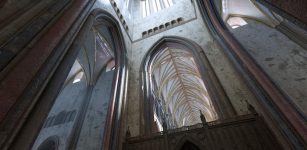 A Glimpse Into The Past – Sights And Sounds Of St. Paul’s Cathedral Recreated
Archaeology | Oct 8, 2021
A Glimpse Into The Past – Sights And Sounds Of St. Paul’s Cathedral Recreated
Archaeology | Oct 8, 2021 -
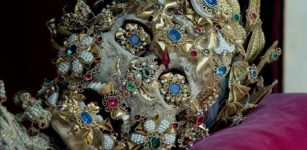 Secret Catacombs With Incredible Ancient Skeletons Covered In Priceless Jewelry
Featured Stories | Nov 20, 2018
Secret Catacombs With Incredible Ancient Skeletons Covered In Priceless Jewelry
Featured Stories | Nov 20, 2018 -
 Unusual Discovery Of A Bronze Age Axe In Norway – Is An Unknown 3,000-Year-Old Shipwreck Nearby?
Archaeology | Jul 19, 2024
Unusual Discovery Of A Bronze Age Axe In Norway – Is An Unknown 3,000-Year-Old Shipwreck Nearby?
Archaeology | Jul 19, 2024 -
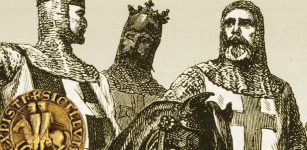 Knights Templar – Among The Most Wealthy And Powerful Of The Western Christian Military Orders
Featured Stories | Jun 11, 2020
Knights Templar – Among The Most Wealthy And Powerful Of The Western Christian Military Orders
Featured Stories | Jun 11, 2020 -
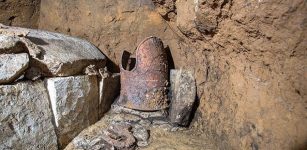 1,500-Year-Old Tunnel Tomb With Human Remains And Artifacts Accidentally Unearthed In Japan
Archaeology | Feb 23, 2018
1,500-Year-Old Tunnel Tomb With Human Remains And Artifacts Accidentally Unearthed In Japan
Archaeology | Feb 23, 2018 -
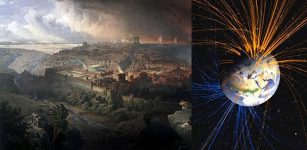 Ruins Of Ancient Jerusalem Shed New Light On Earth’s Magnetic Field’s Behavior
Ancient Symbols | Aug 11, 2020
Ruins Of Ancient Jerusalem Shed New Light On Earth’s Magnetic Field’s Behavior
Ancient Symbols | Aug 11, 2020 -
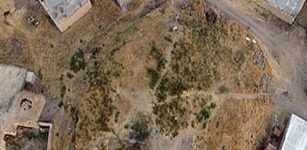 Clay-Jar Tombs With Child Corpses – Unearthed In Northwest Iran
Archaeology | Jun 28, 2020
Clay-Jar Tombs With Child Corpses – Unearthed In Northwest Iran
Archaeology | Jun 28, 2020 -
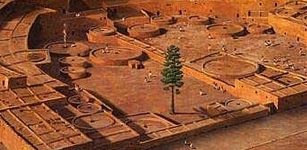 Ponderosa Pine: Life And Death Of One Of America’s Most Mysterious Trees
News | Mar 18, 2020
Ponderosa Pine: Life And Death Of One Of America’s Most Mysterious Trees
News | Mar 18, 2020 -
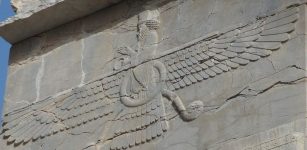 Winged Sun Disk: One Of The Oldest And Most Important Solar And Religious Symbols
Ancient Symbols | Mar 15, 2019
Winged Sun Disk: One Of The Oldest And Most Important Solar And Religious Symbols
Ancient Symbols | Mar 15, 2019 -
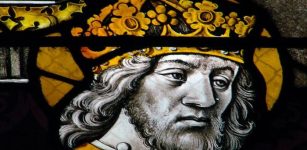 Charlemagne – Most Famous Emperor Of Education And Enemy Of Pagan Worshippers – What Did He Really Mean For Europe?
Featured Stories | Mar 22, 2023
Charlemagne – Most Famous Emperor Of Education And Enemy Of Pagan Worshippers – What Did He Really Mean For Europe?
Featured Stories | Mar 22, 2023 -
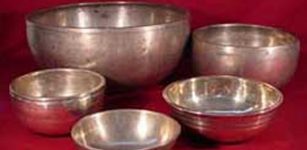 Sound Healing And Crystal Therapy, Ancient Arts Being Practiced Today – What Does Science Say?
Featured Stories | Mar 25, 2017
Sound Healing And Crystal Therapy, Ancient Arts Being Practiced Today – What Does Science Say?
Featured Stories | Mar 25, 2017 -
 11 Reconstructions Of Ancient Cities, Monuments And Sacred Sites
Civilizations | Jun 25, 2024
11 Reconstructions Of Ancient Cities, Monuments And Sacred Sites
Civilizations | Jun 25, 2024 -
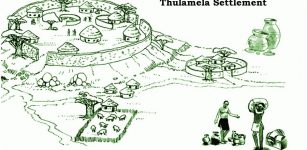 Enigmatic Ancient Kingdom Of Thulamela Created By Mysterious Shona People
Civilizations | Dec 28, 2016
Enigmatic Ancient Kingdom Of Thulamela Created By Mysterious Shona People
Civilizations | Dec 28, 2016 -
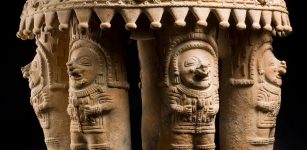 Ancient Secrets Of Sophisticated Jama-Coaque People
Civilizations | Sep 27, 2016
Ancient Secrets Of Sophisticated Jama-Coaque People
Civilizations | Sep 27, 2016 -
 Mystery Of Ancient, Overlooked Calico: Early Man Site In The Mojave Desert Of North America
Civilizations | Sep 9, 2021
Mystery Of Ancient, Overlooked Calico: Early Man Site In The Mojave Desert Of North America
Civilizations | Sep 9, 2021 -
 Smallest Arm Bone In Human Fossil Record Illuminates Homo Floresiensis Origin
Archaeology | Aug 7, 2024
Smallest Arm Bone In Human Fossil Record Illuminates Homo Floresiensis Origin
Archaeology | Aug 7, 2024 -
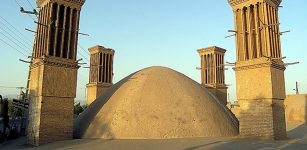 Remarkable Ancient Windcatchers: Air Conditioning Systems Built Since Antiquity
Ancient Technology | Sep 3, 2016
Remarkable Ancient Windcatchers: Air Conditioning Systems Built Since Antiquity
Ancient Technology | Sep 3, 2016 -
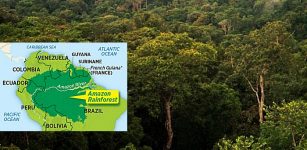 Indian Black Earth And Biodiversity Of The Amazon – New Study
Archaeology | Jun 24, 2020
Indian Black Earth And Biodiversity Of The Amazon – New Study
Archaeology | Jun 24, 2020

